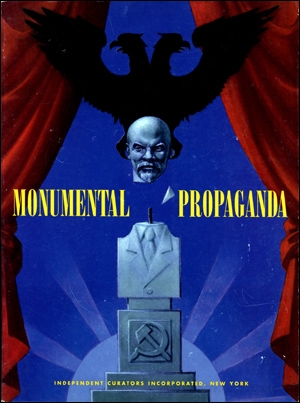This blog post is pertaining to my soviet art research paper, which is over different propaganda mechanisms used by the Soviet State in the 1980’s Moscow Olympics; with the purpose of deceiving the international order that the USSR was a supporter of peace and détente, but in fact it was engaged in a controversial Cold War proxy war in Afghanistan. Through my research, I learned that the USSR utilized several different propaganda mechanisms in the build-up prior to the Games, as well as throughout the 1980’s Olympics. My paper focused on two such mechanisms: the official poster of the 1980 Olympics, as well as the official mascot known as Misha the Bear.
The official poster of the 1980 Olympics was full of symbolism. It portrayed Leonid Brezhnev as the central figure, smiling and waving. In the background was the official Olympic emblem, the USSR flag, and a Russian quote that advocated peace and friendship. I believe that these symbols and the poster overall was used as a propaganda mechanism by the Soviet State in order to portray itself as something it was not at the time: a friendly nation state that supported world peace and détente.
My second artistic example I used was the official mascot, Misha the Bear. Misha was portrayed as a cute, cuddly, smiling bear cub. The mascot is still popular today and was a massive public hit during the 1980 Olympics, as well as being utilized in several of its ceremonies. I believe that the bear also contained several propagandistic symbols, such as: a friendly demeanor, an approachable aura, and a soft appearance. However, I liken its true nature and symbolism to that of a real bear, aggressive on the attack and tenacious on the defense.
Thus, the Soviet State utilized various forms of propaganda in the 1980 Olympic games. By doing so, it attempted to “pull the wool” over the world’s eyes in other activities it was involved in at this same time, such as the Russian invasion of Afghanistan; an event that exasperated the entire international community and threatened the very fabric of the delicate Cold War US-Russo relationship.

